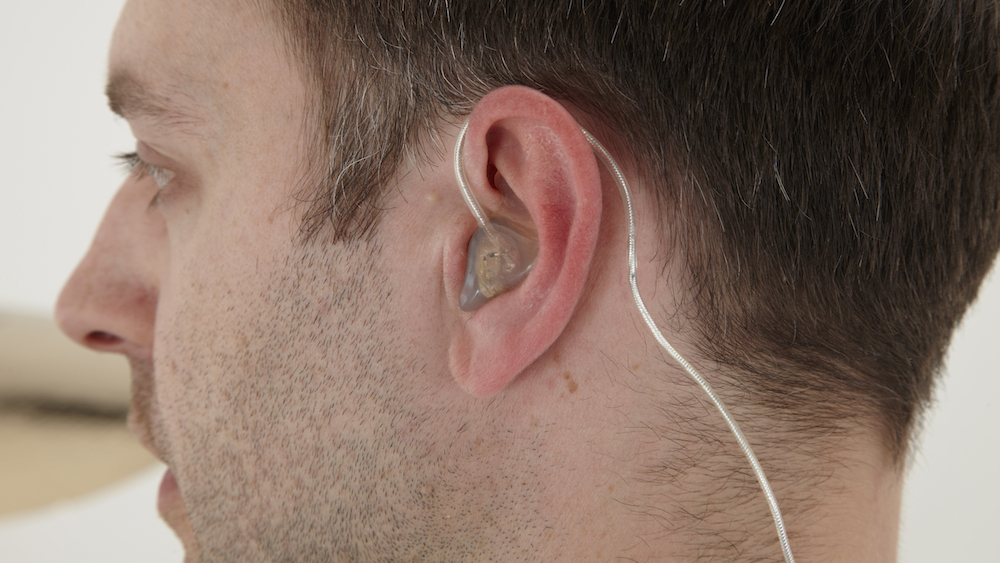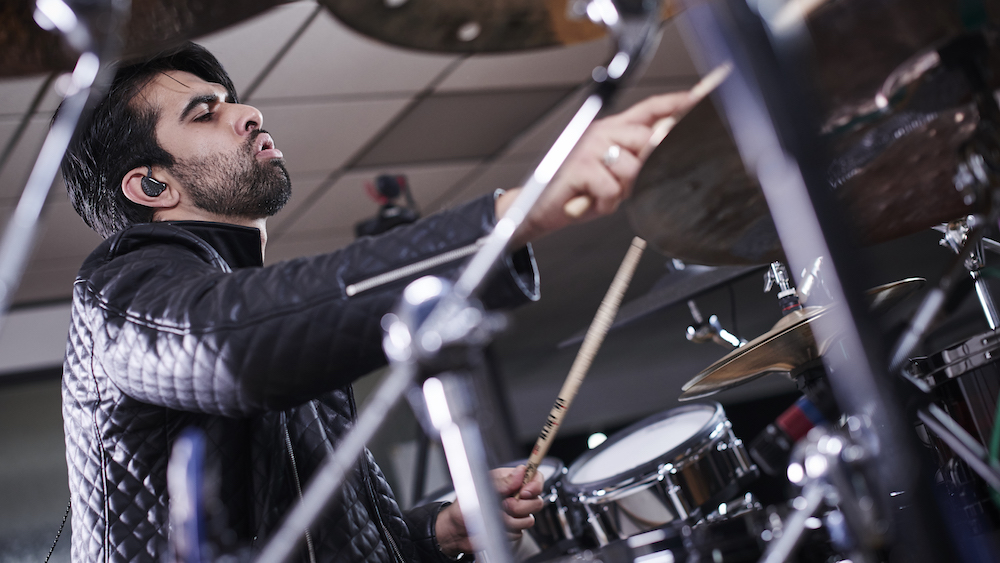Do you need in-ear monitors?
Think in-ears could make you a better live performer? We look at the pros (and one con) of IEMs to help you decide whether to make the switch

In-ear monitors (IEMs) are, put simply, an absolute godsend for live performance. As anyone who has battled against feedback squeals, or struggled to hear themselves against the crack of a snare drum, these things will change your life.
The premise is simple; instead of relying on wedge monitors at the front of a stage, you get a pure, clean signal pumped directly into your ears. The benefits are numerous, for you, your mix engineer and ultimately for your audience. Allow us to explain why you really need to switch to in-ear monitors.
What are in-ear monitors?
A basic in-ear monitoring system, including the best budget in-ear monitors, comprises three main components; a transmitter, a receiver and a set of earphones. The transmitter connects to the front-of-house mixing desk and wirelessly pipes a balanced output directly to a receiver, worn by the performer, which in turn connects to the earphones.
Usually, the earphones are acoustically isolated, meaning they let only minimal amounts of external audio in. In turn, this means you effectively hear close to what the audience hears, which allows you to ensure everything is playing out the way you want.

What benefits do in-ear monitors offer?
For performers in bands, particularly those playing larger venues or whose musical style is louder, IEMs deliver plenty of benefits. For a start, being able to accurately and clearly hear your bandmates at a consistent volume means basic requirements like timing and pitch (for singers) are far easier to monitor. It’s easier on vocal cords too; because you’re no longer required to ‘battle’ against the volume of everyone else, you’re less likely to have to push your voice to extremes.
Anyone who has played live knows the value of a good mix engineer, and if you turn up with a set of IEMs, you’ll likely make them very happy indeed
Anyone who has played live knows the value of a good mix engineer, and if you turn up with a set of IEMs, you’ll likely make them very happy indeed. No more shouting from the stage that you can’t hear yourself. With IEMs, the engineer now faces a much more agreeable task of simply ensuring what the performer hears is in line within what the audience hears.
Are in-ear monitors easy to use?
Surprisingly so. Earlier iterations of IEMs required the user or, more likely, the engineer to have an understanding of UHF radio bands but modern versions are much more plug-and-play. A set like the Shure P3TR112GR, which comprises transmitter and earphones, has a simple one-touch frequency scan that finds a clean wireless channel and automatically assigns it. The receiver, worn by the performer, has controls on it which allows the user to set their own personal mix too.
Want all the hottest music and gear news, reviews, deals, features and more, direct to your inbox? Sign up here.

Are in-ear monitors comfortable?
Typically, the bulk of the cost in an IEM system comes in the transmitter and the receiver. In order to keep costs affordable, the earphones you’ll find bundled with most sets aren’t super-high quality. We don’t mean in terms of pristine audio – they’re not meant to produce audiophile levels of sonic excellence – but in terms of their comfort and durability.
What many users do is graduate from the bundled ‘phones to a dedicated, custom-moulded set. Essentially, you provide a profile of your own ear shape and a custom set of plugs bespoke to you can be produced. These provide the ultimate in comfort and performance, but can carry a corresponding price tag…
Who are in-ear monitors best for?
The obvious answer here is singers; when hitting the right notes is essential, doing so without also battling to make yourself heard is imperative. Using IEMs takes away the ‘volume wars’ and allows the vocalist to concentrate instead on delivering a great performance.
Larger venues and louder bands are the two other factors. As you’ll know, relying on stage wedges in larger venues can be precarious, with everyone fighting to hear themselves over the ambient noise.
Realistically, however, IEMs would benefit most performers in most situations. For drummers, having your own personal click track keeps everything tight and in time, while for guitarists they allow you to ensure your tone is exactly how you want it and that you’re giving those string bends enough welly.

What are the benefits over traditional monitoring methods?
Traditional monitoring methods, be that stage wedges or basic instrument/amplification output, are the aural equivalent of a free-for-all. Trying to appease the different monitoring requirements of everyone, from the vocalist to the drummer, using one source of monitoring isn’t conducive to a happy band.
Aside from the personal benefits of using IEMs – clear, balanced, accurate sound - they also deliver benefits in the way of freedom to move around the stage without losing your sweet spot.
Will they make me a better musician, performer or engineer?
It’s rare you find a piece of equipment that will make you better at what you do. With IEMs, however, there is an argument that they just make life easier. Easier to get a better overall monitor mix, easier to make sure you’re hitting the right notes, and easier to wake up the next day without that ringing sound in your ears.
For balance, we should point out they’re not for everyone. Performers used to playing more intimate venues, or playing more sedate styles of music, may find them overkill, while there is also an argument that for all you benefit from having an accurate mix in your ears, you do lose some of that connection with the crowd. But on the whole, IEMs will provide an instant levelling-up for most performers.
Conclusion
We’re big fans of IEMs, and have experienced ourselves the benefits they bring to live performance. No more arguing with guitarists over who should be loudest in the on-stage mix. No more missed high notes because you can’t accurately hear what you’re doing. And no more angry front-of-house engineers battling wild feedback loops.
For all we’ve listed the benefits to you, as performers, the real winners here are your audience, who will now experience the music exactly as you intended it.
- Best PA speakers: compact and mobile live sound systems
Chris Corfield is a journalist with over 12 years of experience writing for some of the music world's biggest brands including Orange Amplification, MusicRadar, Guitar World, Total Guitar and Dawsons Music. Chris loves getting nerdy about everything from guitar and bass gear, to synths, microphones, DJ gear and music production hardware.
